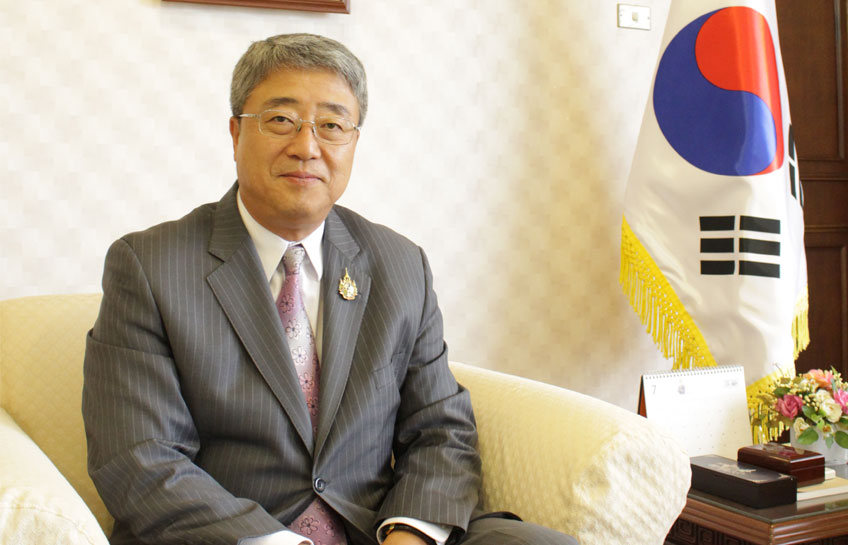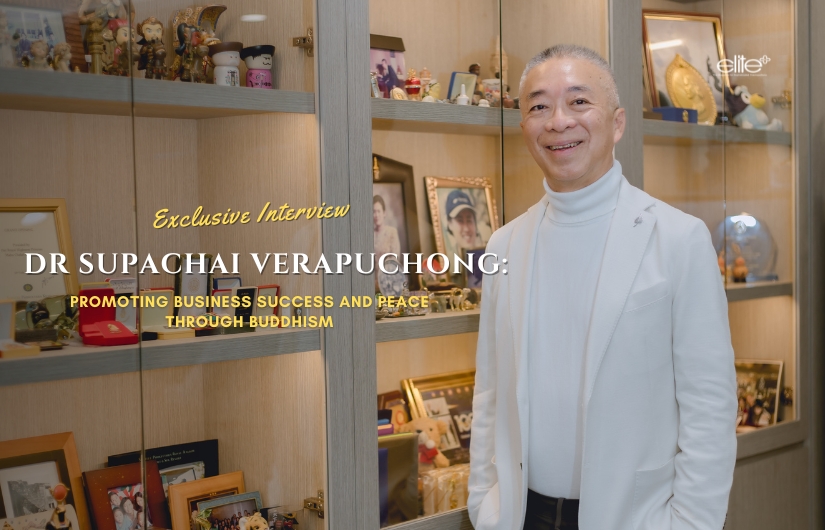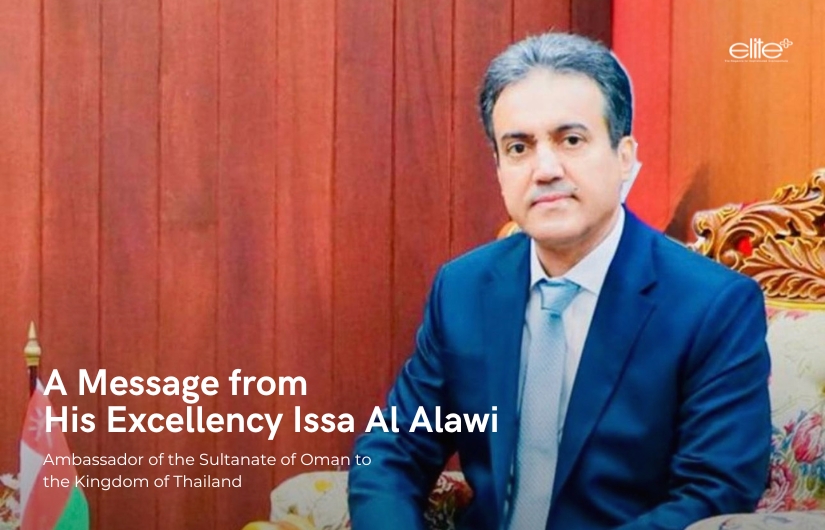- How long have you been posted in Bangkok, and how do you like living in Thailand so far?
I arrived here in October 2012, and I have been enjoying my work and my life here. Thailand is a traditional ally that sent troops to Korea in 1950 to defend us from the attack from the North, and is an important partner to Korea as one of the principal ASEAN member countries. I also like the Thai smiles, Thai food, the Thai people, and the country’s beautiful scenery and tropical climate—I like the hot weather too, since I like swimming outside.
- When did the Thai-Korean relationship start?
Thailand is known for its frequent exchanges with the West, which started as early as the Ayutthaya era. Records show that Korea’s Goryeo Kingdom also had contact with what was then Siam, but contacts seem to have ended after that time.
After Korea received valuable assistance from Thailand during the Korean War, the two countries went on to establish diplomatic relations in 1958, followed by the establishment of the Korean Embassy in Bangkok in 1960.
- In terms of trade, how is the relationship between the two countries? What are the main products and types of investment?
The annual volume of bilateral trade between Korea and Thailand has dollars in recent years, with Korean exports to Thailand amounting to about $8 billion and imports from Thailand to Korea roughly $5 billion. Korea mainly exports parts and materials for Korean investors in Thailand such as POSCO Steel, Samsung Electronics and LG Electronics. Korean foreign direct investment in Thailand is about 2.9 billion U.S. dollars.
Korea’s main exports to Thailand are iron and steel plates and electronic components, whereas Korea’s main imports from Thailand are integrated circuits, natural rubber, and sugar. Last week, I was very happy to attend a meeting with visiting Korean businessmen belonging to the Korea Import Association (KOIMA).
On Friday afternoon, General Prayuth graciously granted the 150 members of KOIMA an audience at Government House and gave very encouraging remarks. The Korean delegation expressed their intention to import more Thai products and presented the prime minister with songs without a piano by the 20 member choir. After the audience, the delegation had a chance to tour the market along the canal. At the opening ceremony of the seminar on Thursday, also attended by General Chartchai, I introduced some statistics in the speech as follows:
The economic situation in the world is not good nowadays. It is the same in Korea and Thailand. Imports to Korea from the world decreased 16% from January to April this year. Imports from ASEAN countries decrease by 16% too. However, imports from Thailand during the same period did not decrease at all.
- Korea has had great success in exporting its pop culture through the Korean Wave. Please elaborate on this, and the connection between Thailand and Korea.
In recent years, Korean pop culture has grown in popularity around the globe. Korean pop songs, widely known as “K-pop” since the mid-2000s, have won over fans around the world. Korean teen idols have dominated Asia’s pop charts with their upbeat rhythms, catchy tunes and lyrics and stylish dance moves. Notably, a few K-pop groups have Thai members: Nichkhun of 2PM and BamBam of GOT7 are both from Thailand.
Meanwhile, the glamorous lifestyles and intriguing love stories of Korean TV dramas have captivated viewers from many countries. One in particular, Dae Jang Geum, is shown in 87 countries including Thailand. The heroine of the series is an orphaned kitchen cook who goes on to become the first female physician to a king.
- Why is it important for Korea to increase its intangible cultural exports and make the rest of the world more aware of Korean culture?
Human beings have been living on the Korean Peninsula for thousands of years and the resultant heritage is both tangible and intangible. These traditions are pathways to understanding the past and keys to unlocking the future. Studying a society’s cultural heritage is like looking at its cultural and artistic DNA. Koreans have an intrinsic sense of the aesthetic, a sense of space that shows harmony and adaptation to nature.
Even though globalization is a worldwide phenomenon, cultural differences cannot be overlooked.When disparate cultures meet and mingle, introducing one’s own culture—whether it is tangible or intangible—is just as important as understanding other cultures. That is to say, cultural diversity forms the cultural heritage of humanity.





















































































































































































































































































































































































































































































































































































































































































































































































































































































































